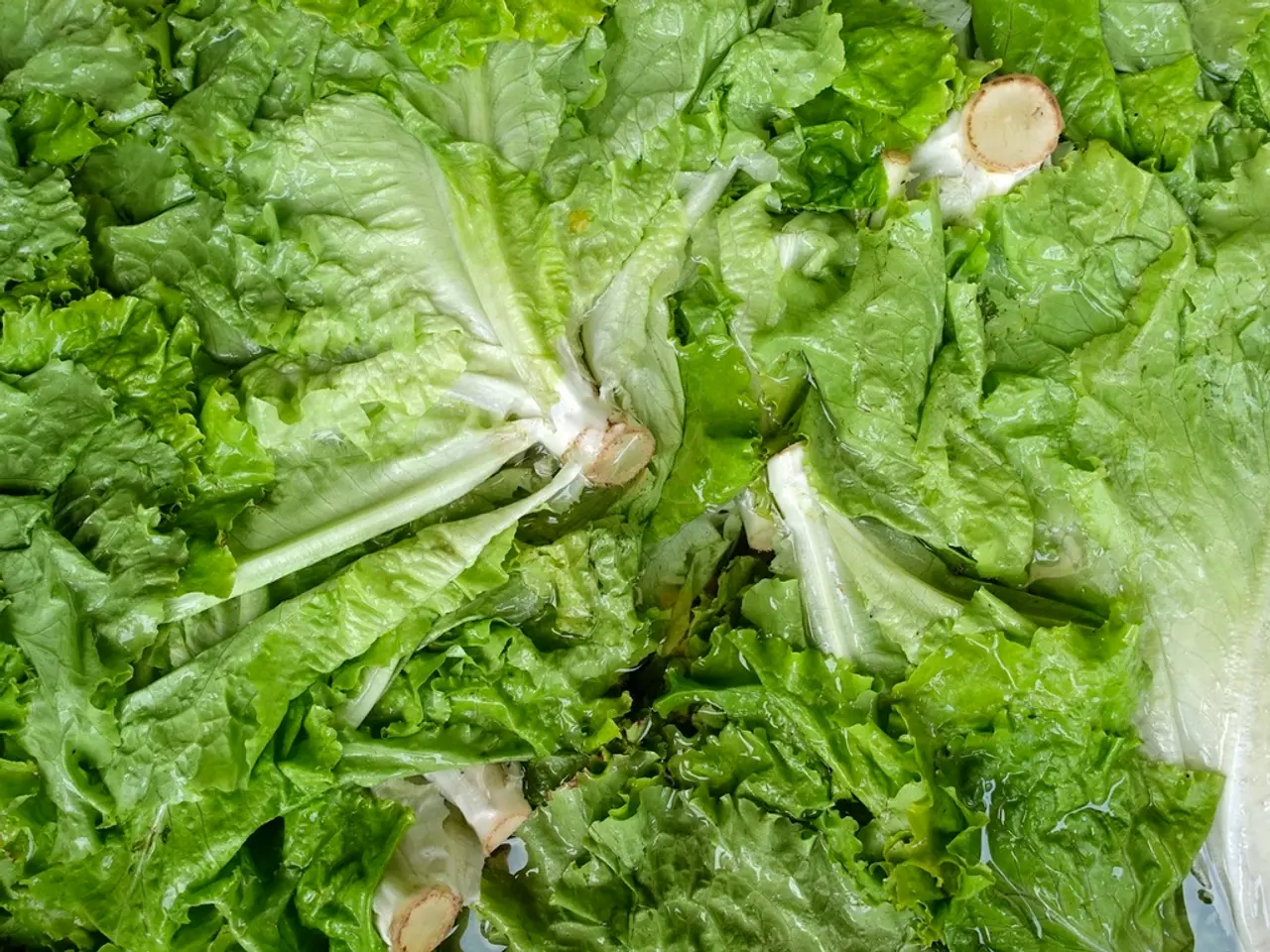Infestation of Powdery Mildew in Greenhouse-Grown Lettuce Crops
In the cooler months, greenhouse-grown lettuce faces a common challenge: Powdery Mildew. This fungal disease, caused by Golovinomyces cichoracearum, can significantly impact crop yield and quality. However, with the right strategies, it is possible to effectively manage this disease.
To control powdery mildew in greenhouse environments, key strategies include maintaining proper greenhouse climate conditions, improving air circulation, removing infected leaves, and using appropriate fungicides or biological treatments.
Climate Control
Maintaining an optimal climate is crucial in the fight against powdery mildew. Keeping the temperature between about 40°F and 70°F (4°C to 21°C) and humidity between 50% and 70% helps reduce the risk of powdery mildew. Heating systems can be used in cold months, while ventilation or cooling systems can be employed to stabilize conditions during warmer periods. Misting or fogging systems can maintain optimal humidity, but it's essential to avoid excessive moisture on leaves.
Airflow Improvement
Improving air circulation is another important factor in managing powdery mildew. This can be achieved by spacing out lettuce plants and using fans or vents. By discouraging the humid, stagnant conditions that favor powdery mildew development, airflow can significantly reduce the disease's spread.
Sanitation
Regular sanitation practices are also vital. Removing and disposing of leaves showing powdery mildew symptoms reduces inoculum sources. It's also important to avoid composting infected material to prevent the spread of the disease.
Fungicides and Treatments
Recent research has evaluated the use of Avelyo fungicide as an effective and safe option for powdery mildew control in greenhouse hydroponic lettuce. This finding suggests potential for integrated disease management. When using fungicides, it's essential to follow guidelines on timing and frequency.
Resistant Cultivars and Preventive Programs
Selecting powdery mildew-resistant lettuce varieties and implementing targeted fungicide programs based on local disease pressure can enhance control strategies in greenhouse settings. Some studies have evaluated and mapped QTL for resistance to powdery mildew in lettuce.
In summary, managing powdery mildew in fall and winter involves integrated practices: optimizing the greenhouse environment (temperature, humidity, airflow), maintaining hygiene by removing infected foliage, and applying approved fungicides such as Avelyo when needed. Monitoring and adjusting these factors regularly are essential for effective control during cooler months when the disease risk can increase.
References for further reading on powdery mildew in lettuce include works by Koike, Simko, Rauscher, Sideman, McCreight, Hayes, Lebeda, and Mieslerova.
Figure 1 shows patches of white powdery growth on the leaves and stems of lettuce due to powdery mildew. Figure 2 shows nutrient film technique troughs with a fixed plant spacing, and scouting efforts should increase when the crop canopy begins to close.
Disease severity varies based on lettuce type, plant age, plant condition, and microclimate conditions. Older leaves and mature plants are usually affected first and may become chlorotic, deformed, and necrotic. Powdery mildew forming on the underside of leaves can go undetected and move quickly through the greenhouse before it is noticed.
Products labeled for application to lettuce may have a label restriction for use in the greenhouse. Similarly, products labeled for control of powdery mildew on ornamentals may not be labeled for use on greenhouse vegetables.
Powdery mildew spores are spread by air currents and can germinate and infect a plant if conditions are favorable. Favorable conditions for powdery mildew development include dense foliage canopy, restricted airflow, ideal temperature for spore germination (64-77°F/18-25°C), optimal relative humidity (RH) levels for spore germination (95-98%), and the ability to occur at a broad temperature range (41-86°F/5-30°C). Free water on plant surfaces prevents spore germination and infection for powdery mildew.
When detected on plants, treat with a fungicide labeled for powdery mildew management on lettuce, following all guidelines and rotating fungicide products with different modes of action. Leaf and butterhead lettuce types show more resistance to powdery mildew than romaine and crisphead lettuces.
G. cichoracearum can infect over 150 species, including other greenhouse crops in the Asteraceae family. The greenhouse environment provides ideal conditions for the development of powdery mildew on lettuce.
In conclusion, by implementing these strategies, growers can effectively manage powdery mildew in greenhouse-grown lettuce during fall and winter, ensuring a healthy and productive crop.
Read also:
- Is it advisable to utilize your personal health insurance in a publicly-funded medical facility?
- Harmful Medical Remedies: A Misguided Approach to Healing
- Can the flu vaccine prevent stomach issues mistaken for the flu? Facts about flu shots revealed.
- Struggling Health Care Systems in Delaware Grapple with the Surge of an Aging Demographic




